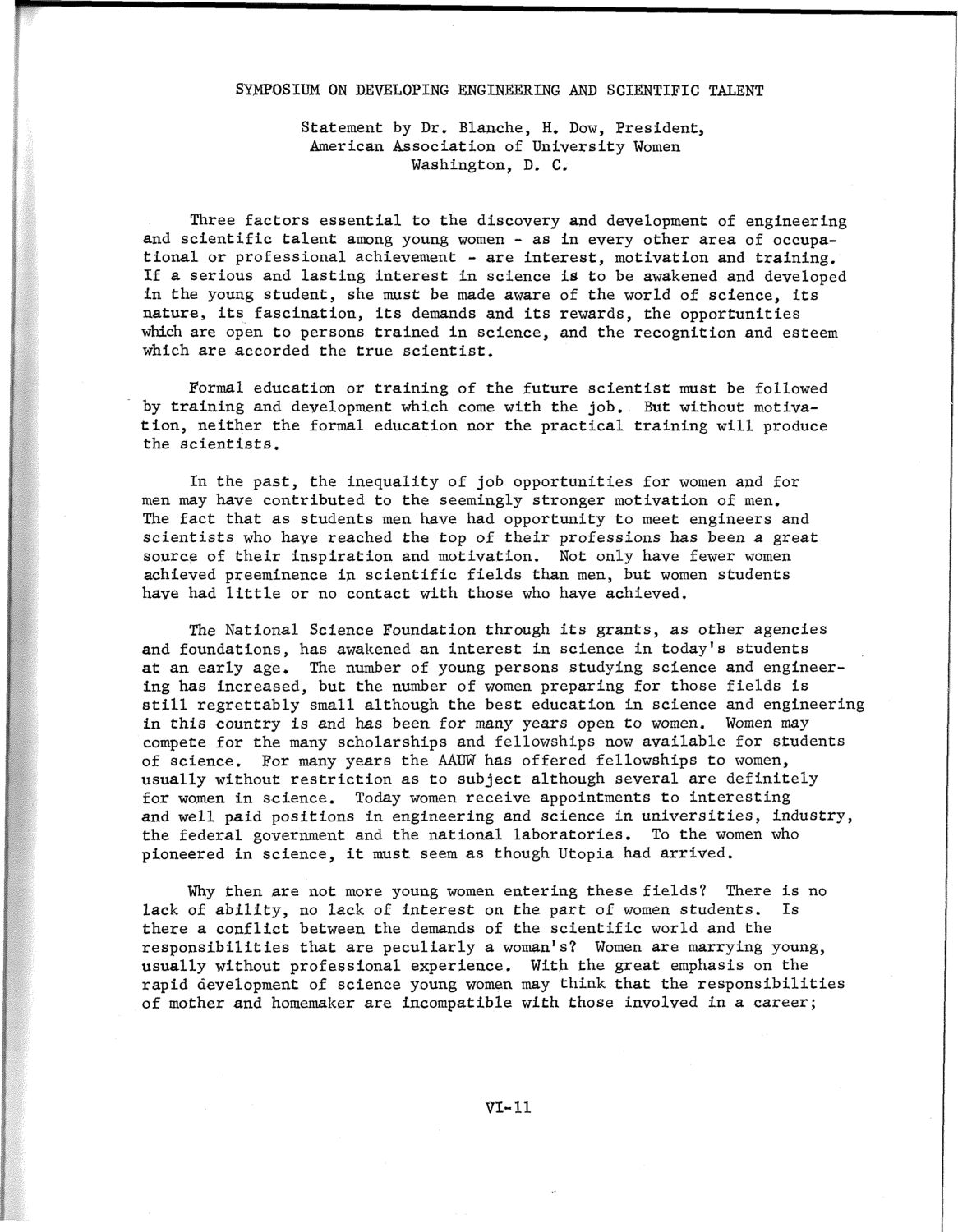| |
| |
Caption: SWE - Proceedings of the First International Conference of Women Engineers and Scientists
This is a reduced-resolution page image for fast online browsing.

EXTRACTED TEXT FROM PAGE:
SYMPOSIUM ON DEVELOPING ENGINEERING AND SCIENTIFIC TALENT Statement by Dr. Blanche, H. Dow, President, American Association of University Women Washington, D. C. Three factors essential to the discovery and development of engineering and scientific talent among young women - as in every other area of occupational or professional achievement - are interest, motivation and training. If a serious and lasting interest in science is to be awakened and developed in the young student, she must be made aware of the world of science, its nature, its fascination, its demands and its rewards, the opportunities which are open to persons trained in science, and the recognition and esteem which are accorded the true scientist. Formal education or training of the future scientist must be followed by training and development which come with the job. But without motivation, neither the formal education nor the practical training will produce the scientists. In the past, the inequality of job opportunities for women and for men may have contributed to the seemingly stronger motivation of men. The fact that as students men have had opportunity to meet engineers and scientists who have reached the top of their professions has been a great source of their Inspiration and motivation. Not only have fewer women achieved preeminence in scientific fields than men, but women students have had little or no contact with those who have achieved. The National Science Foundation through its grants, as other agencies and foundations, has awakened an interest in science in today's students at an early age. The number of young persons studying science and engineering has increased, but the number of women preparing for those fields is still regrettably small although the best education in science and engineering in this country is and has been for many years open to women. Women may compete for the many scholarships and fellowships now available for students of science. For many years the AAUW has offered fellowships to women, usually without restriction as to subject although several are definitely for women in science. Today women receive appointments to interesting and well paid positions in engineering and science in universities, industry, the federal government and the national laboratories. To the women who pioneered in science, it must seem as though Utopia had arrived. Why then are not more young women entering these fields? There is no lack of ability, no lack of interest on the part of women students. Is there a conflict between the demands of the scientific world and the responsibilities that are peculiarly a woman's? Women are marrying young, usually without professional experience. With the great emphasis on the rapid development of science young women may think that the responsibilities of mother and homemaker are incompatible with those involved in a career; VI-11
| |